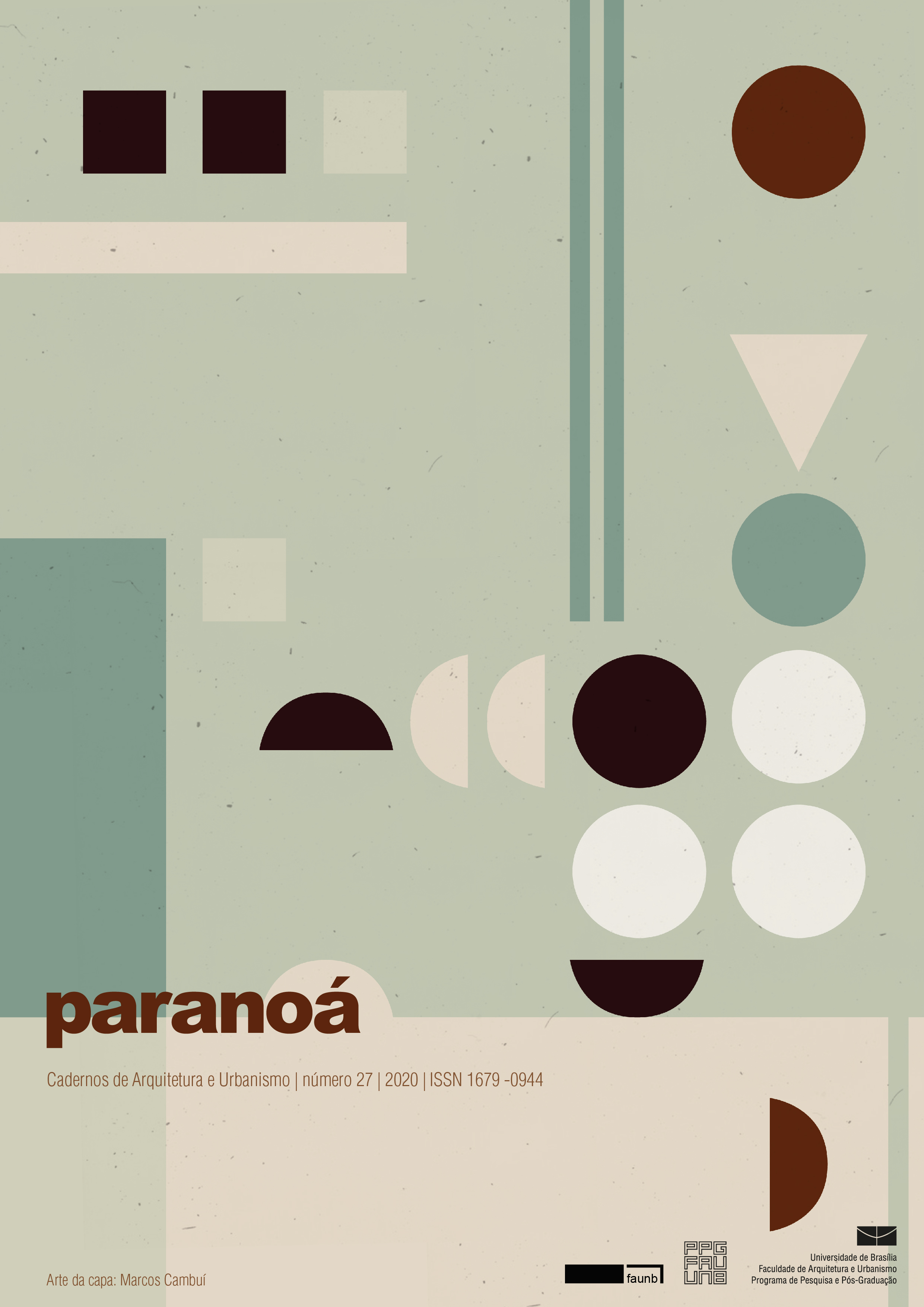Efforts of a structural calculated masonry building with a rigid and elastic foundation
DOI:
https://doi.org/10.18830/issn.1679-0944.n27.2020.02Keywords:
structural masonry; rigid support; elastic supportAbstract
This work evaluates the influence of the rigidity of the foundation in a four-story structural masonry building on the compressive stresses of the walls. The results were obtained from structural models, taking into account vertical and horizontal actions, rigid foundation and elastic base. The building analyzed is symmetrical in both directions and was developed to demonstrate, in a simplified way, what normally occurs in usual buildings. For this case study, walls with and without openings (windows and doors) were modeled, with the objective of enabling the interaction and distribution of efforts resulting from the various calculation hypotheses. For the construction of the structural models, the SAP2000 software was used, using linear portico and plate elements. The analyzes were carried out through actions classified as permanent (D), variables (L) and wind (W “90º” and W “0º”), generating various combinations and interactions between them. The modeling premises for the building are: structure - slabs/walls in plate elements; foundation - radier with piles being used plate and bar elements respectively. Two types of solution for foundations were addressed in the work. In the first model, the support of the tip of the pile is considered rigid (non-removable), without soil-structure interaction. In the second, the support of the pile tip is considered flexible, with soil-structure interaction occurring. For both models, the interaction between the soil and the radier was not considered in this study. In the representation of flexible support, the spring coefficient was obtained from a geotechnical analysis of a load test performed on the soil of a city located in the Federal District, Brazil. Comparing the structural behavior of the building on foundations with rigid or elastic supports, it was observed that, for the same combinations of actions applied in the two models, no significant differences were verified neither in the compression stresses of the walls, nor even in the bending moments of the slabs. The values ”‹”‹of the active stresses, obtained by the structural models, were superior to the resistant stresses of the masonry blocks in some points close to the ends, openings and meetings of the walls. This fact proved the need to carefully evaluate the meetings of walls and where there are openings (windows and doors). It is concluded that the actions of the wind do not significantly interfere in a 4-story structural masonry building. The differences between the stresses with rigid and elastic foundation on the walls, for this case, are very small and have no influence on the design. Most points of maximum tension are located in the lower corners of the walls. Tensile stresses arise in the masonry near the openings. Therefore, it is necessary to carry out grouting and framing in the blocks located at the wall junctions and also in the blocks adjacent to the openings (windows and doors). In the lower and upper parts of the openings, it is necessary to use lintels/counterweights, to combat tensile stresses in masonry. The indicated procedures will guarantee greater security of the building due to the increase in the strength of the blocks reinforced by grout/reinforcement, corroborating the technical understandings on the subject.
Downloads
References
ACCETTI, K. M. Contribuições ao projeto estrutural de edifícios em alvenaria. 1998. 247p. Dissertação (Mestrado) - Escola de Engenharia de São Carlos, Universidade de São Paulo, São Carlos,1998.
ASSOCIAÇÃO BRASILEIRA DE NORMAS TÉCNICAS. NBR 15812: Alvenaria Estrutural ”“ Blocos cerâmicos Parte 1: Projeto. Rio de Janeiro: ABNT, 2010.
ASSOCIAÇÃO BRASILEIRA DE NORMAS TÉCNICAS. NBR 15812: Alvenaria Estrutural ”“ Blocos cerâmicos Parte 2: Execução e controle de obra. Rio de Janeiro: ABNT, 2010.
ASSOCIAÇÃO BRASILEIRA DE NORMAS TÉCNICAS. NBR 15961: Alvenaria Estrutural ”“ Blocos de Concreto - Parte 1: Projeto. Rio de Janeiro: ABNT, 2011.
ASSOCIAÇÃO BRASILEIRA DE NORMAS TÉCNICAS. NBR 15961: Alvenaria Estrutural ”“ Blocos de Concreto - Parte 2: Execução e Controle de Obras. Rio de Janeiro: ABNT, 2011.
ASSOCIAÇÃO BRASILEIRA DE NORMAS TÉCNICAS. NBR 6120: Ações para o Cálculo de Estruturas de Edificações. Rio de Janeiro: ABNT, 2019.
ASSOCIAÇÃO BRASILEIRA DE NORMAS TÉCNICAS. NBR 6122: Projeto e execução de fundações: procedimento. Rio de Janeiro: ABNT, 1996.
ASSOCIAÇÃO BRASILEIRA DE NORMAS TÉCNICAS. NBR 6123: Forças Devidas ao Vento em Edificações. Rio de Janeiro: ABNT, 1988.
IWAMOTO, Roberto Kunihiro. Alguns aspectos dos efeitos da interação soloestrutura em edifícios de múltiplos andares com fundação profunda, 2000.140 f. Dissertação (Mestrado), Universidade de São Paulo, São Carlos, SP, 2000.
PARSEKIAN, Guilherme. Apostila de alvenaria estrutural. São Carlos: UFSCAR. Depto. de Engenharia, 2012.
RAMALHO, Marcio; CORRÊA, Márcio. Projetos de Edifícios de Alvenaria Estrutural. São Paulo: PINI, 2003.
TAUIL, Carlos; NESSE, Flávio. Alvenaria Estrutural. São Paulo: PINI, 2010.
Downloads
Published
How to Cite
Issue
Section
License
Autores que publicam nesta revista concordam com os seguintes termos:
- Autores mantém os direitos autorais e concedem à revista o direito de primeira publicação, com o trabalho simultaneamente licenciado sob a Licença Creative Commons Attribution que permite o compartilhamento do trabalho com reconhecimento da autoria e publicação inicial nesta revista. http://creativecommons.org/licenses/by/4.0
- Autores têm autorização para assumir contratos adicionais separadamente, para distribuição não-exclusiva da versão do trabalho publicada nesta revista (ex.: publicar em repositório institucional ou como capítulo de livro), com reconhecimento de autoria e publicação inicial nesta revista.
- Autores têm permissão e são estimulados a publicar e distribuir seu trabalho online (ex.: em repositórios institucionais ou na sua página pessoal) a qualquer ponto antes ou durante o processo editorial, já que isso pode gerar alterações produtivas, bem como aumentar o impacto e a citação do trabalho publicado (Veja O Efeito do Acesso Livre).















